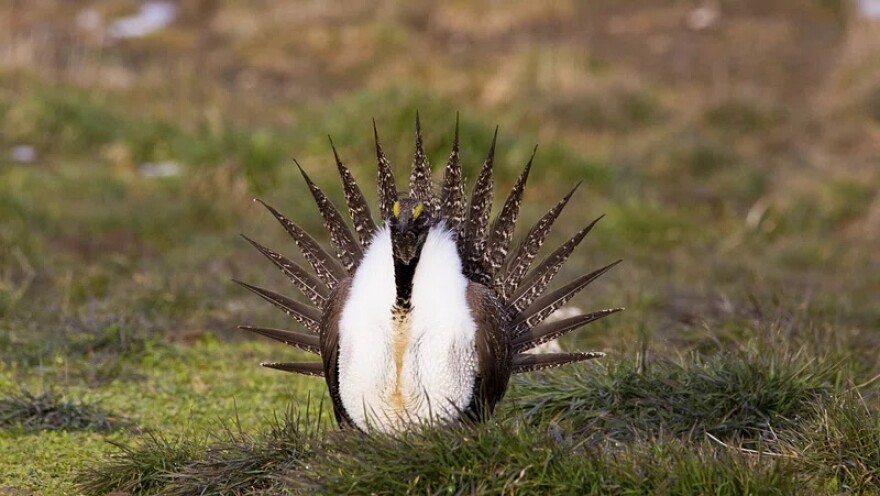News brief:
Moderate cattle grazing doesn’t hurt sage-grouse nesting success, according to a newly released study. The research led by the University of Idaho shows that one of the most iconic – and threatened – western birds can coexist with ranching under the right circumstances.
The chicken-sized greater sage-grouse lives among sagebrush in at least nine western states and is known for its elaborate mating displays. But populations have declined significantly in recent decades, in part due to sagebrush being damaged or destroyed. So, federal officials have long debated whether to list the bird under the Endangered Species Act.
A federal listing would impact both energy development and agriculture in the region. But professor Courtney Conway, who led the study, said there wasn’t enough science documenting how grazing affects grouse nesting to inform decision-makers.
“Most of the management guidelines and the lawsuits and litigation so far have been completely based on the premise that livestock grazing reduces sage-grouse nesting success,” Conway said in a news release. “So, our study is going to completely revolutionize how grazing management guidelines are going to be written throughout the West.”
Researchers captured and studied dozens of sage-grouse hens over 10 years. They also sampled vegetation and invertebrates at dozens of plots across Idaho to determine how grazing affects bird predation, nesting and other indicators of population health.
The study found potential benefits to cows living next to the birds. Cattle can often attract insects to an area, and bugs serve as excellent nutrition for grouse chicks.
“I think this is a significant outcome for the ranching community, which has wondered all along what they would do if scientists learned that spring grazing was bad for grouse,” professor Karen Launchbaugh, co-lead investigator of the study, said in a news release.
Academics, land management agencies, ranchers, cattlemen’s associations, conservation groups and others all supported the study.
Other researchers have pointed out that the impact of livestock on sage-grouse habitat could depend on a number of factors, including how much grazing is allowed in an area and when grazing occurs.
This story was produced by the Mountain West News Bureau, a collaboration between Wyoming Public Media, Nevada Public Radio, Boise State Public Radio in Idaho, KUNR in Nevada, KUNC in Colorado and KANW in New Mexico, with support from affiliate stations across the region. Funding for the Mountain West News Bureau is provided in part by the Corporation for Public Broadcasting.








